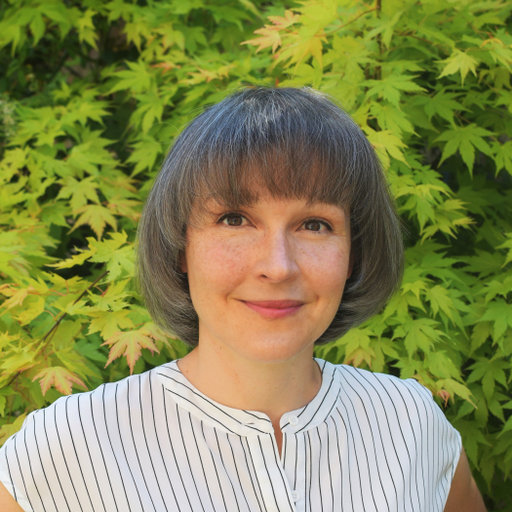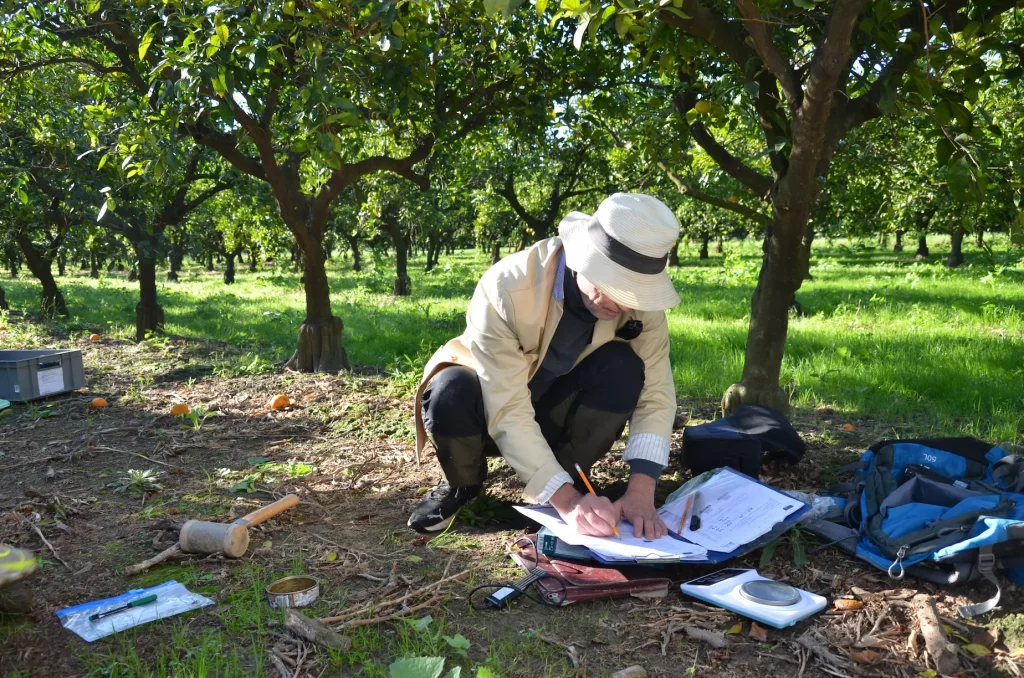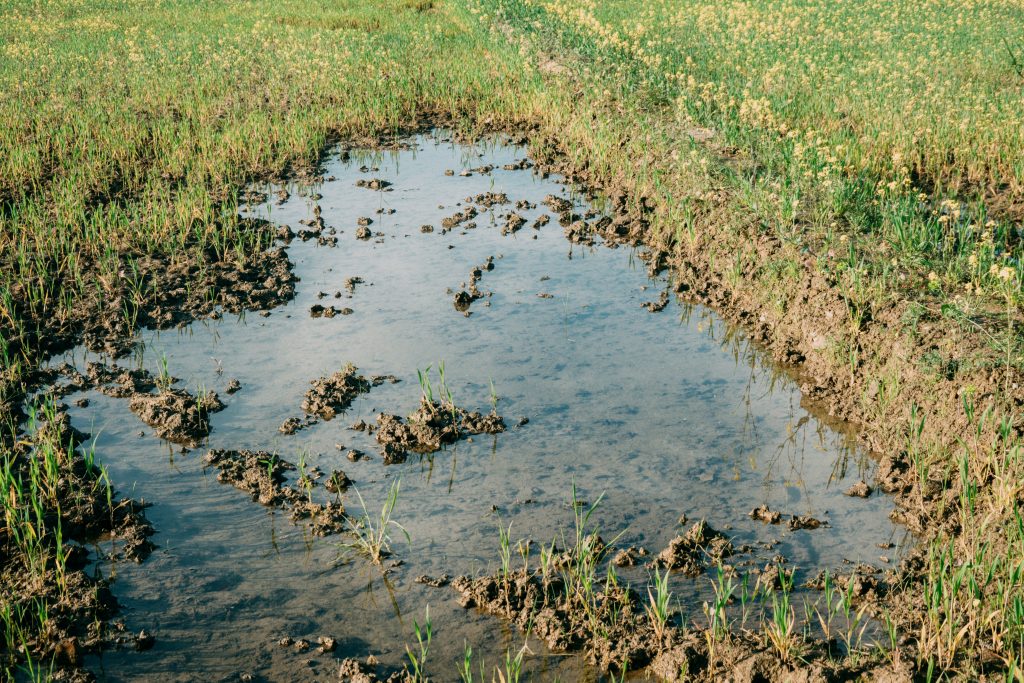Interview with Anna Krzywoszynska, Associate Professor of Transdisciplinary Human-Environment Relations (University of Oulu)
AI4SoilHealth’s inspiring chat with Anna Krzywoszynska, a leading environmental social sciences and humanities scholar, highlights the opportunities and risks tied to the application of artificial intelligence to land management and soil monitoring practices.
In this article, Krzywoszynska advocates a dialogue between science and society, integrating technology with human-environment knowledge systems. Combining scientific-based research with socio-ecological frameworks may help advance community-driven soil care practices and enhance quality land stewardship, beyond data-driven evaluations of soil performances.

AI4SoilHealth structured the interview based on an adapted version of the “seven-questions approach” originated from the work of the Institute of the Future (and further refined by Shell and ICL). This past-aware and future-looking set of questions provided a fertile outline to discuss soil health frameworks from the perspective of Environmental Social Sciences and Humanities. This article is loosely based on the interview and some quotes have been rephrased for stylistic consistency.
Environmental social sciences and humanities remind us of the link between soil care practices and soil health
Our conversation starts from the observation that the ecosystem services perspective seems to dominate the current discourse around soil health, driving scientific research efforts (and funding) and shaping environmental policymaking. This performance-centred perspective precludes a discussion on soil’s multiple values and hinders eco-social readings of land issues.
According to Anna Krzywoszynska, Associate Professor of Transdisciplinary Human-Environment Relations at the University of Oulu, the “a healthy soil is what a healthy soil does” discourse narrows the bandwidth of soil research. A functional definition of soil health based on its ecosystem services (i.e. carbon sequestration, biodiversity conservation, water drainage, etc.) limits the scope of research and neglects understanding the relations between soil ecosystems and human society (including, but not limited to the land workers).
When we quantify soil health without considering how different groups interact with it, we lose sight of how actions lead to results, and don’t fully appreciate soil’s complex social roles. Krzywoszynska’s insights are an invitation to pursue technological advancements that are relevant to situated people-land relationships of care, and to ensure that techno-scientific innovation contributes positively to environmental stewardship and the responsible management of natural resources.
Beyond spreadsheets: the risk of monitoring-led actions
The scientific desire to make soil environments and wider ecology calculable and embed governance in a constant monitoring of environmental change risks alienating land workers themselves. In Krzywoszynska’s words: “Limiting the discourse on soil health to a checkbox of indicator measurements removes a dynamic involvement [of people] in soil care as a basis for a sustainable society, both ecologically and socially”.
In this monitoring-led scenario, enhanced by the increasing availability of AI monitoring tools, the risk is that a hegemony arises in which knowledge systems in land governance and management lose sight of bottom-up knowledge streams tied to land practices coming from the communities who live and work on the land.
If progress in soil care is solely quantified by metrics such as nitrogen pollution or carbon sequestration, without equally valuing community involvement and the pursuit of living in harmony with the land, such quantitative assessments will fall short of capturing the interconnectedness that assures the well-being of societies and ecosystems. Relying solely on technology-driven mediation to shape our future relationships with soils is not advisable.
“The push towards creating Smart Earth observational systems and [incorporating those into governance] decision-making systems, and the development of technologies for constant monitoring and evaluation devoid of sufficient [democratic] involvement, can lead to a disconnect between the people who live and work on the land and the decisions made for that land”, warns Krzywoszynska.
Multiple levels of disconnection with land
Krzywoszynska notes how today’s decision-making for soil management and soil health happens with little democratic involvement of the people affected. Standards and target values are set by people whose lives and livelihoods are not dependent on the actual settings being assessed: “Although monitoring [and decision-making] algorithms are a result of human brains, the values being defined are not sourced from actors involved and connected to the land being monitored”.
Disconnection from land becomes a concern on multiple levels. Machine-led land management practices open to the possibility of job loss as the activities of land workers such as farmers and environmental land managers become more automated. However, “it’s not only about losing land-related jobs but about losing the capacity to learn from land and raise questions about the direction of society based on the experiences of change in land”. Removing land workers from the processes of producing knowledge about land, and from the democratic debates about how to shape relations with land, will prevent their meaningful involvement.
Extending the ‘land run by machines’ scenario into a gloomy future, Anna’s dystopian vision is one of “Amazon-owned farms, farmed by Black & Decker robots without direct involvement from people living on this land, in these landscapes”.
Disempowered generations of land stewards
As Krzywoszynska notes, although the artificial intelligence variable is a new entry, the disempowerment of land workers has been around at least since the 1940s, embedded in “farm as factory” models that have dominated the past decades of knowledge production about soils.
She points out that research on good land management practices has long been led by agritech companies and businesses. The support and advisory services made available for farmers have been generally weak and unidirectional, with farmers being seen primarily as consumers of techno-scientific products, and with little investment in farmers’ capacity building. Krzywoszynska believes the failure to provide farmers with a knowledge infrastructure able to help them become better land stewards and perform as educated ecosystem guardians has prevented improvements in quality land management.
In many respects, she stresses, this disempowerment worsened during the Green Revolution, which strengthened the top-down approach, further removing actual farming communities from researching best practices in farming, and preventing the formulation of relevant process questions to intensify their learning about the ecosystem they steward.
The farming population is seeing a demographic collapse, with fewer and fewer people interested in taking up farming livelihoods. Over the past few decades, a positive cultural discourse around agrarian living has failed to develop, and the legacy of this void is a demographic gap in farming where, as the current generation of farmers approaches retirement, a new wave is not ready to take over. “In our recent past, we were unable to deliver a powerful narrative around farming as a valuable enterprise – not a poverty trap – contributing to a happy life – notes Krzywoszynska – and now we are faced with a shortage of farmers and skilled land workers able to cater for land”. At the same time, matters of access to land need to be addressed to remove barriers for emerging farmers and enable the development of a more inclusive and diverse agricultural community.
On a positive note, Krzywoszynska feels that the European farming community is actively stepping up to seek a voice in the management of soil-related issues. Recent farming strikes are receiving significant public support, reflecting a growing social recognition of farmers’ critical role as the foundation of global food security. Positioning farmers as key players in thinking about soil management empowers them to embrace and champion sustainable land management practices through a constructive dialogue addressing the concerns of both scientific communities and policymaking actors.
Co-production of soil knowledge between science and society
To fill the distance between soil health data and soil care values, Krzywoszynska calls for the co-production of soil knowledge between science and society, especially through the efforts of social movements involved in regenerative agriculture, carbon farming groups, environmental groups, back-to-land initiatives, and many others.
These groups are active at different scales and levels in advocating a dynamic engagement with soil matters to link an understanding of soil health with strengthening community well-being. “Whether at farm, school, community or regional level, the effort is about being proactive in learning about soil and producing knowledge from the bottom-up, with special attention to the role soil can play in a truly ‘healthy’ society”, Krzywoszynska observes.
Krzywoszynska believes a strengthened collaboration between communities of practice and scientists will fast-track soil care and allow science to provide responsive tools to support land management practices and improve ecosystem services overall. In an age of unprecedented innovation applicable to environmental sciences, technology’s main priority should be providing farming communities and all other interested groups with tools and assets to improve the ecological functions of soil, thereby empowering them to invest in regenerative farming practices and other environment-conscious activities able to benefit society as a whole.
Supporting place-based research
Research has a crucial role to play in shifting balances and prioritising engagement from relevant actors.
While Krzywoszynska praises the fact that research and innovation projects devoted to soil incorporate societal actors, she notes how the funding mechanism is inherently biased towards research institutions: “The potential for community engagement and social policy-making is weakened by an institutions-focused approach”. Krzywoszynska, who is also a Board Member of the Horizon Europe Mission Soil Deal for Europe, believes the generation of research questions on soil solely from the scientific perspective undermines social innovation which is the main mechanism for securing the longevity of Living Labs, as foreseen by Mission Soil. “To ensure Living Labs achieve their potential, the land workers’ communities must be central in setting their research agendas. If the structures of Living Labs funding prevent such community-led direction, we will not see a change in the status quo”.
For actionable knowledge about soils to be produced, more place-based research is needed. In this respect, Krzywoszynska identifies a need to re-direct money towards place-specific initiatives, looking at soil management and social innovation in specific areas. “Funding should flow towards place-based research seeking to explore (cheaper) small-scale local sustainable growth solutions – Krzywoszynska suggests – The generalising approach, seeking to find one-size-fits-all solutions for anywhere and everywhere, is bound to be less impactful”.
Soil’s role in re-thinking resource-intensive lifestyles and embracing de-growth
Given the interconnectedness of the soil ecosystem with the evolving global scenario of resource scarcity, geopolitical unrest, and climate concerns (climate refugees, extreme weather events, etc.), land use and management are central to the update of less resource-intensive lifestyles. In Krzywoszynska’s words, “A truly green future will require massive investment in the development of both practices and technologies that can actually help us to be less resource-intensive”.
Krzywoszynska recognizes how “de-growth” may be an uncomfortable term and a difficult concept to tackle but underlines the paramount need to reconcile the economy, in terms of the movements of goods and services in society, with a shrinking resource base. Speaking of soil, this means reimagining agriculture, reconsidering access to land, and promoting small-scale land stewardship based on local drivers to develop sustainable food systems in support of socio-environmental justice. Krzywoszynska hints at the potential ‘small farm future’ envisaged by Chris Smaje where small communities involved in good land management systems provide quality everyday living and sustenance to local groups.
There may be different outlooks on the future, but Krzywoszynska feels a change of pace is mandatory: “We either work towards integrating soil ecosystems within a larger picture of a controlled and awareness-based de-growth, or we are likely to face a catastrophic version of it”.
Takeaways for AI4SoilHealth
The conversation with Anna Krzywoszynska has inspired several reflections at the project level, starting from the need to keep AI-supported environmental monitoring grounded in soil health principles.
As a data-driven research project, AI4SoilHealth should integrate insights offered by social sciences, environmental humanities, and eco-philosophy disciplines to ensure research supports land workers and avoids becoming isolated in a theoretical bubble of data. The project aims to leverage AI to empower farmers and land managers, fostering collaborative efforts in soil care practices and solutions that recognize and protect soil’s ‘agency’.
AI4SoilHealth recognises the importance of fostering a dialogue between science and society as the cornerstone for developing policy recommendations that respond to the needs of a sustainable global economy and society. The potential for AI in environmental monitoring is immense, yet it’s crucial for this technology to account for human-land relations and address the needs of the wider natural world.
—
This article is based on an interview conducted by Giovanna Giuffrè & Valentina Malcotti (ISINNOVA) as part of a broader effort to analyse the policy landscape surrounding soil health monitoring, carried out by AI4SoilHealth.



